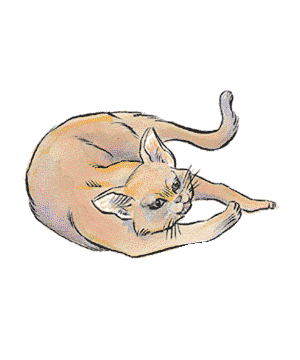

2140

| Domestic | Wild | Elven | |
|---|---|---|---|
| Climate/Terrain: | Any inhabited | Any non-arctic | Temperate forest |
| Frequency: | Common | Uncommon | Rare |
| Organization: | Solitary | Solitary | Solitary |
| Activity Cycle: | Any | Any | Any |
| Diet: | Carnivore | Carnivore | Carnivore |
| Intelligence: | Animal (1) | Animal (1) | Semi- to low (2-7) |
| Treasure: | Nil | Nil | Nil |
| Alignment: | Neutral | Neutral | Neutral |
| No. Appearing: | 1 (1-12) | 1 (2-5) | 1 |
| Armor Class: | 6 | 5 | 4 |
| Movement: | 9 | 18 | 18 |
| Hit Dice: | � | 1 | 3+6 |
| THAC0: | 20 | 19 | 17 |
| No. of Attacks: | 2 | 3 | 3 |
| Damage/Attack: | 1-2/1 (claws/bite) | 1-2/1-2/1-2 | 1-2/1-2/1-3 |
| Special Attacks: | Rear claw rake, 1-2 | Rear claw rake, 1-2/1-2 | See below |
| Special Defenses: | See below | See below | See below |
| Magic Resistance: | Nil | Nil | 20% |
| Size: | T (1’ tall) | T (1-2’ tall) | T (1’ tall) |
| Morale: | Average (8-10) | Average (8-10) | Elite (13-14) |
| XP Value: | 7 | 35 | 650 |
Cats of different sizes and colorations are common throughout the world. Some are pets, while many are wild.
Combat: Cats are efficient hunters, moving with grace and stealth; opponents suffer a -3 penalty on surprise rolls. A cat’s excellent senses and agility allows it to be surprised only on a 1 or 2. Its senses also allow it to hunt efficiently at night.
Cats attack with their claws and teeth; if they hit with front claws, they rake with rear claws. A domestic cat’s claws and rake each count as only one attack, rather than one per claw.
Cats have retractable claws which can be extended for climbing or drawn in for speed. They are agile climbers and can scale or move in trees at half normal movement rate. They can leap great distances to avoid obstacles or spring onto prey.
Habitat/Society: Cats are common in settled regions. Many cultures keep them as pets, and they can be found in the homes of nobles and peasants alike. Some societies worship cats as divine beings, while other nations fear and hate them as the minions of evil.
Ecology: Cats are commonly used to control rodent populations, though some hunters use them to recover downed birds and other small prey.
Domestic Cat
There are many breeds of domestic cat, all of which share basic characteristics, differing only in outward appearance. An average adult cat weighs eight to ten pounds, though some pampered specimens can weigh as much as 25 pounds.
Cats seldom attack creatures larger than themselves, though they will defend themselves. They often chase and kill mice, birds, rats, and other small creatures. A domestic cat is capable of a burst of speed, boosting its movement rate to 18 for a round and maintaining such speed for 1d10 rounds.
A well-treated cat will live for 15 years or more. The cat’s gestation period is about two months, with 1d4+1 kittens in each litter. Kittens are weaned when about eight weeks old. Mother cats will fight to the death to defend kittens.
Wild Cat
Wild cats are very similar to domestic cats, and some were pets that went feral. Generally, wild cats are tougher, stronger, and more capable hunters than domestic cats.
Elven Cat
Cats kept by elves have evolved into magical creatures, possibly aided by arcane means. They are very intelligent and have their own language, and many can speak a crude form of the elven tongue. Some live with gnomes, brownies, or woodland creatures, and also speak a basic form of their keepers’ language. Most have gray-brown fur with dark stripes.
Elven cats are very stealthy, imposing a -5 penalty to opponents’ surprise rolls. They are surprised only on a 1. Elven cats have a 99.9% chance to move silently, and a 90% chance to hide in wilderness areas. They are excellent climbers, can leap 20 feet with ease, and enjoy swimming and playing in water.
Elven cats have magical abilities that they use to avoid enemies. They have limited ESP which is used to determine intent. They can use enlarge and trip once per day, and reduce and tree twice per day; for magical abilities, elven cats are treated as 9th-level spellcasters. Enlarge doubles an elven cat’s Hit Dice and damage; tree allows it to assume the form of a tree’s limb.

◆ 262 ◆